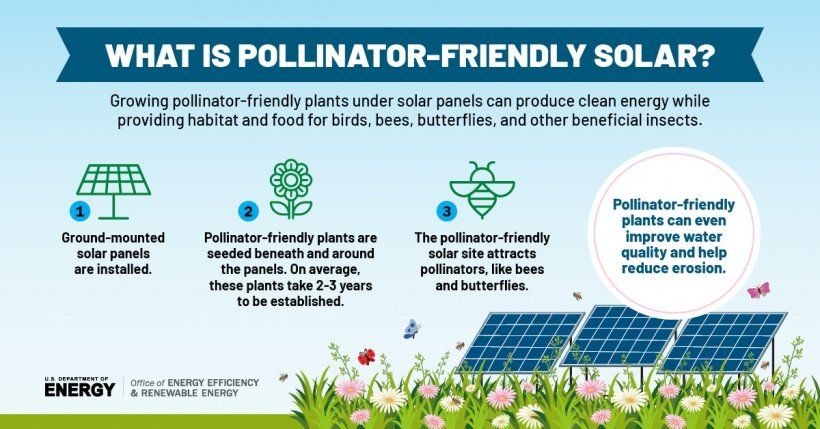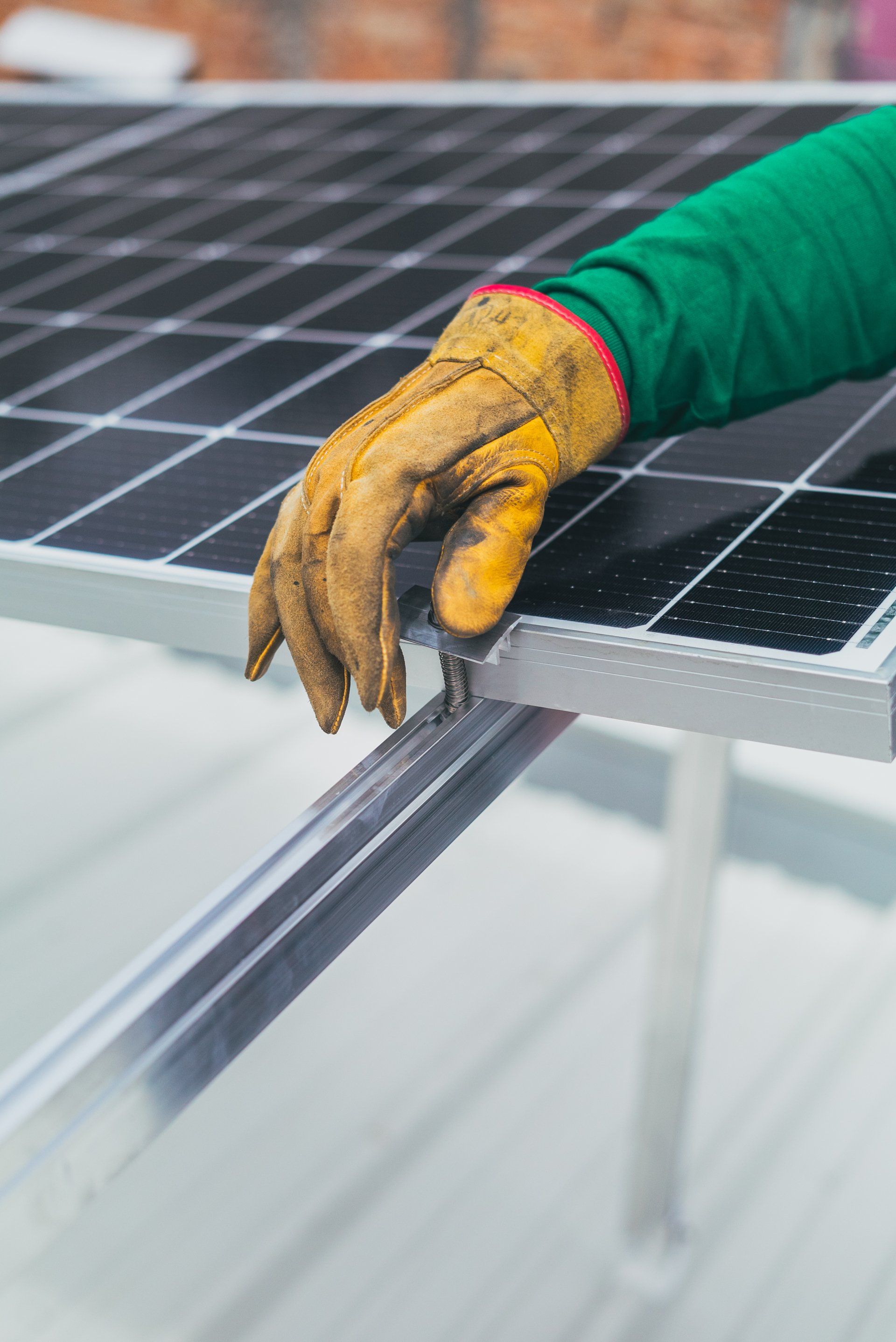By: Michele Boyd, Program Manager, Strategic Analysis and Institutional Support

Pollinators—such as bees, butterflies, and other insects—are critical to the success of about 35 percent of global food crop production. In order to thrive, pollinators must have a suitable habitat. Establishing pollinator-friendly plants under and around ground-mounted solar arrays has the potential to provide this critical habitat and benefit both the pollinators and nearby agriculture. But a number of important questions remain about the impacts of pollinator-friendly solar and how to implement it at a large scale.
The U.S. Department of Energy Solar Energy Technologies Office (SETO) is working to better understand the economic, ecological, and performance impacts of co-locating pollinator habitat and solar arrays. This research is part of our broader agrivoltaics research, which studies how solar and agriculture can co-locate. Some of that research includes:
- Seed mixes and stormwater management in Georgia: A pollinator-friendly solar farm on former U.S. President Jimmy Carter’s land is one of five solar sites being used to study stormwater infiltration and runoff at solar farms. They are testing three different seed mixes, including the industry-standard grass, a low-diversity pollinator mix, and a high-diversity planting pollinator mix.
- Ecological and performance impact studies in the Midwest: SETO funded a project led by the University of Illinois to investigate solar co-located with pollinator plantings at large-scale installations, with teams of researchers working at seven separate sites in the Midwest. From their findings, they will develop a pollinator planting manual, cost-benefit calculator, native seed mix selection tool, and pollinator assessment tool. Together, these tools will address questions on project cost, return on investment, logistical needs, and site- or project-specific constraints.
Tracking bee behavior at solar installations in Minnesota: As part of the Innovative Solar Practices Integrated with Rural Economies and Ecosystems (InSPIRE) project, researchers from Argonne National Laboratory are counting bees’ visits at pollinator-friendly vegetation grown underneath or near solar panels, as well as tracking changes in numbers and types of bees in nearby crop fields before and after vegetation planting at the solar sites. This work will help to determine whether pollinator-friendly solar installations can benefit insect populations and local agriculture.

Another SETO-funded project is the AgriSolar Clearinghouse, which provides resources and technical assistance programs to farmers, solar companies, and other stakeholders interested in co-locating solar and pollinator habitats. The clearinghouse includes research findings, data, and online tools that address barriers to solar-agriculture co-location and connects participants through an online forum, mailing list, workshops, and farm tours to facilitate peer exchange and mentoring.
This research will enable more solar deployment to help meet the Biden Administration’s goal of 100% carbon-free electricity by 2035. Our Solar Futures Study found that solar energy could provide 1 terawatt of electricity-generating capacity, which could require the use of 5.7 million acres of land. While that is only 0.3% of the total contiguous land area of the United States, it is important to understand how to maximize benefits to the local environment and agricultural communities that host solar arrays.
A SETO-funded study by Argonne National Laboratory and the National Renewable Energy Laboratory found that 1,350 square miles of agricultural land in the United States in close proximity to current or planned utility-scale solar deployments could benefit from pollinator habitat at the solar facilities. Other studies have found that pollinator habitats can reduce operations and maintenance costs over time due to lower mowing and herbicide costs.
In May, SETO announced the Foundational Agrivoltaic Research for Megawatt Scale (FARMS) funding opportunity, which will fund projects that study how to scale up agrivoltaics, including pollinator habitat, and maximize the combined value to solar energy, pollinators, and agriculture. We look forward to considering the pollinator projects applications, in addition to all the other agrivoltaics applications, when they are submitted later this summer.
If you are interested in co-locating solar arrays and pollinator habitat, join us at the National Mall on June 24 from 10 a.m. to 2 p.m. ET with our colleagues at the U.S. Department of Agriculture to celebrate Pollinator Week. Stop by and learn more about the research we fund.
Learn more about SETO’s research in solar and agriculture co-location and solar energy, wildlife, and the environment.




